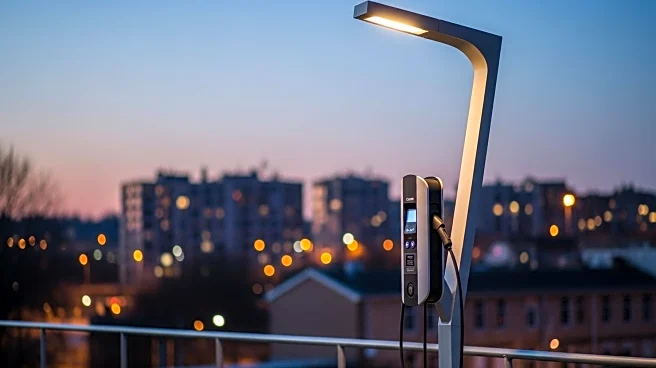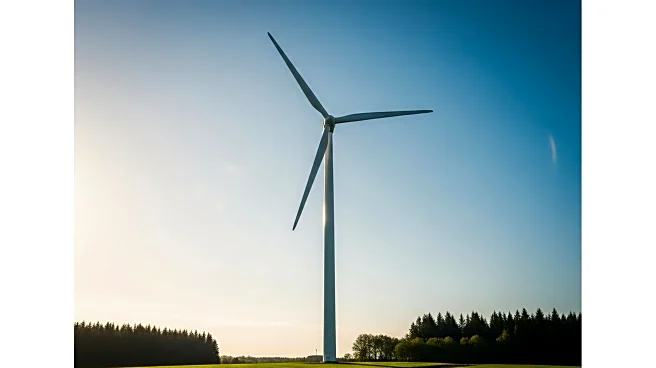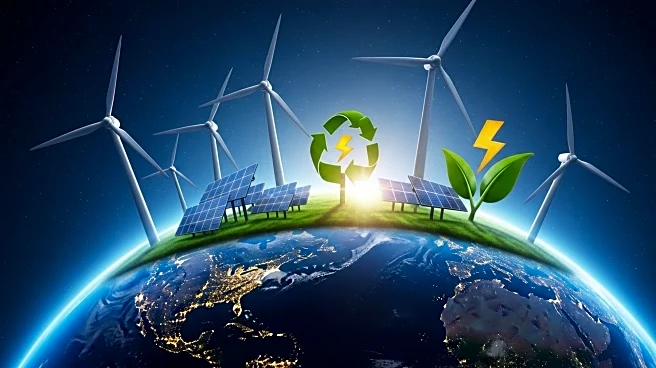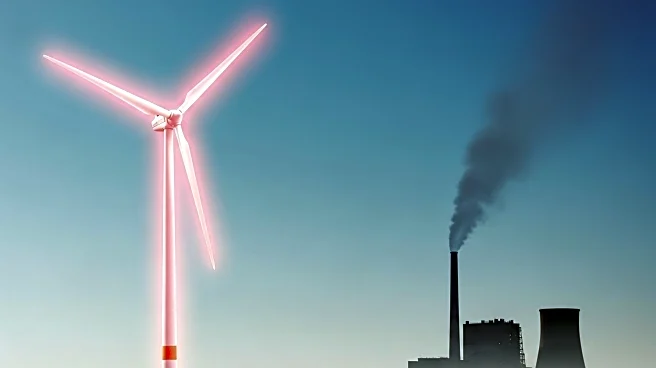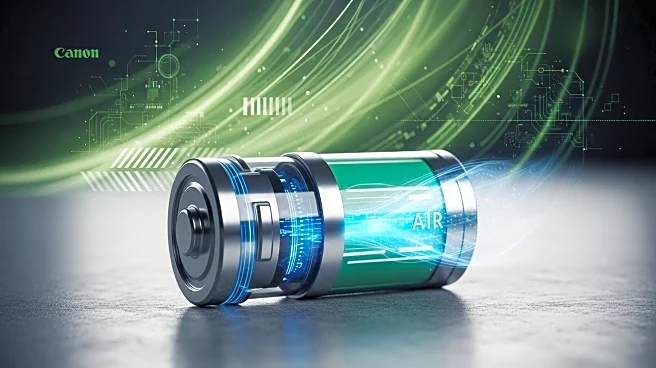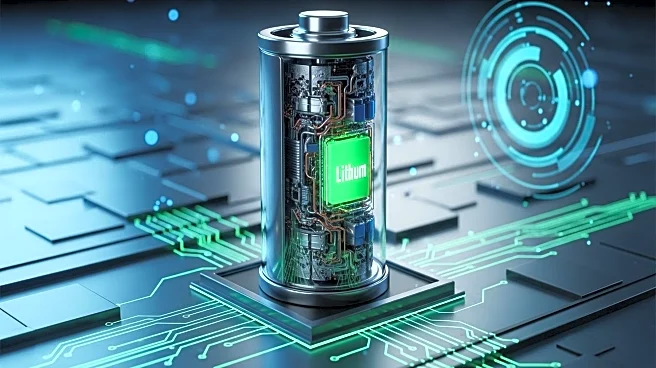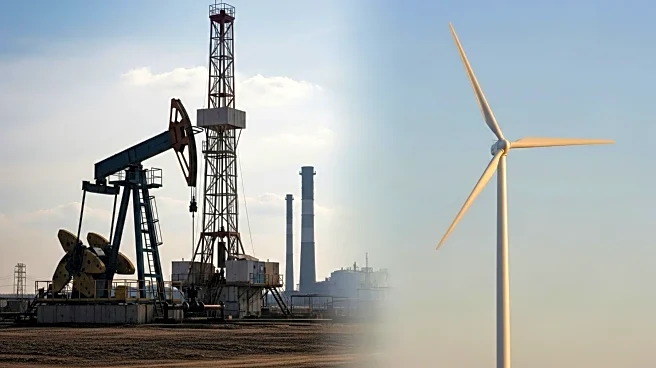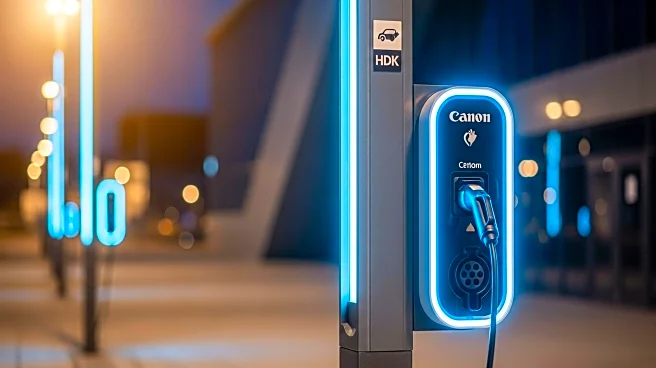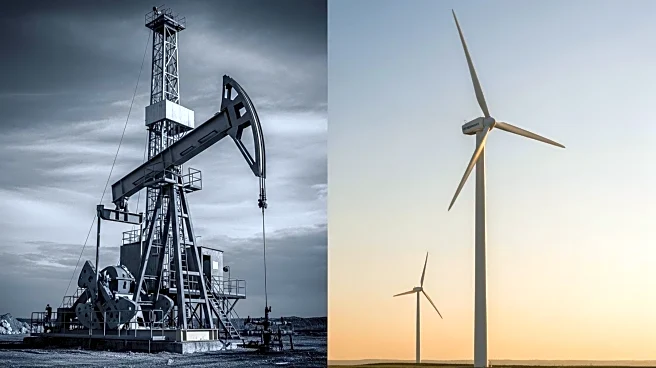What's Happening?
MIT researchers have significantly improved a novel type of 'concrete battery,' known as electron-conducting carbon concrete (ec³), increasing its energy storage capacity by tenfold. This advancement could transform buildings, bridges, and sidewalks into large-scale energy storage systems capable of powering entire cities. The ec³ material combines cement, water, a liquid electrolyte, and nanoscale carbon black to create a dense, conductive network that can store and release energy. The recent study, published in the Proceedings of the National Academy of Sciences, highlights that five cubic meters of ec³ can now store over 10 kilowatt-hours of electricity, enough to power a typical household for a day. This development addresses a key challenge in renewable energy: local power storage when solar or wind energy is unavailable.
Why It's Important?
The enhancement of concrete batteries represents a significant step forward in sustainable energy solutions, particularly for urban environments. By integrating energy storage capabilities directly into infrastructure, cities can reduce reliance on traditional energy grids and improve resilience against power outages. This technology offers a sustainable alternative to lithium-ion batteries, which rely on scarce and toxic materials. The ability to store energy locally could facilitate the transition to renewable energy sources, supporting efforts to reduce carbon emissions and combat climate change. Stakeholders in construction and urban planning stand to benefit from this innovation, as it opens new possibilities for multifunctional infrastructure that not only supports but also powers urban life.
What's Next?
The research team is exploring real-world applications of ec³, including off-grid homes and roads that could charge electric vehicles. The material has already been tested in Japan for heating sidewalks in snowy conditions, suggesting potential uses in sustainable construction. Future developments may focus on optimizing the production process and exploring additional applications, such as carbon dioxide absorption and self-repairing infrastructure. As the technology advances, collaboration with construction companies and urban planners will be crucial to integrate these energy-storing materials into new and existing structures.
Beyond the Headlines
The development of ec³ highlights the intersection of ancient materials and modern nanoscience, offering a glimpse into the future of infrastructure that not only supports but actively contributes to energy needs. This innovation could lead to a paradigm shift in how cities are designed and built, emphasizing sustainability and multifunctionality. Ethical considerations may arise regarding the sourcing of materials and the environmental impact of large-scale implementation, necessitating careful planning and regulation.

